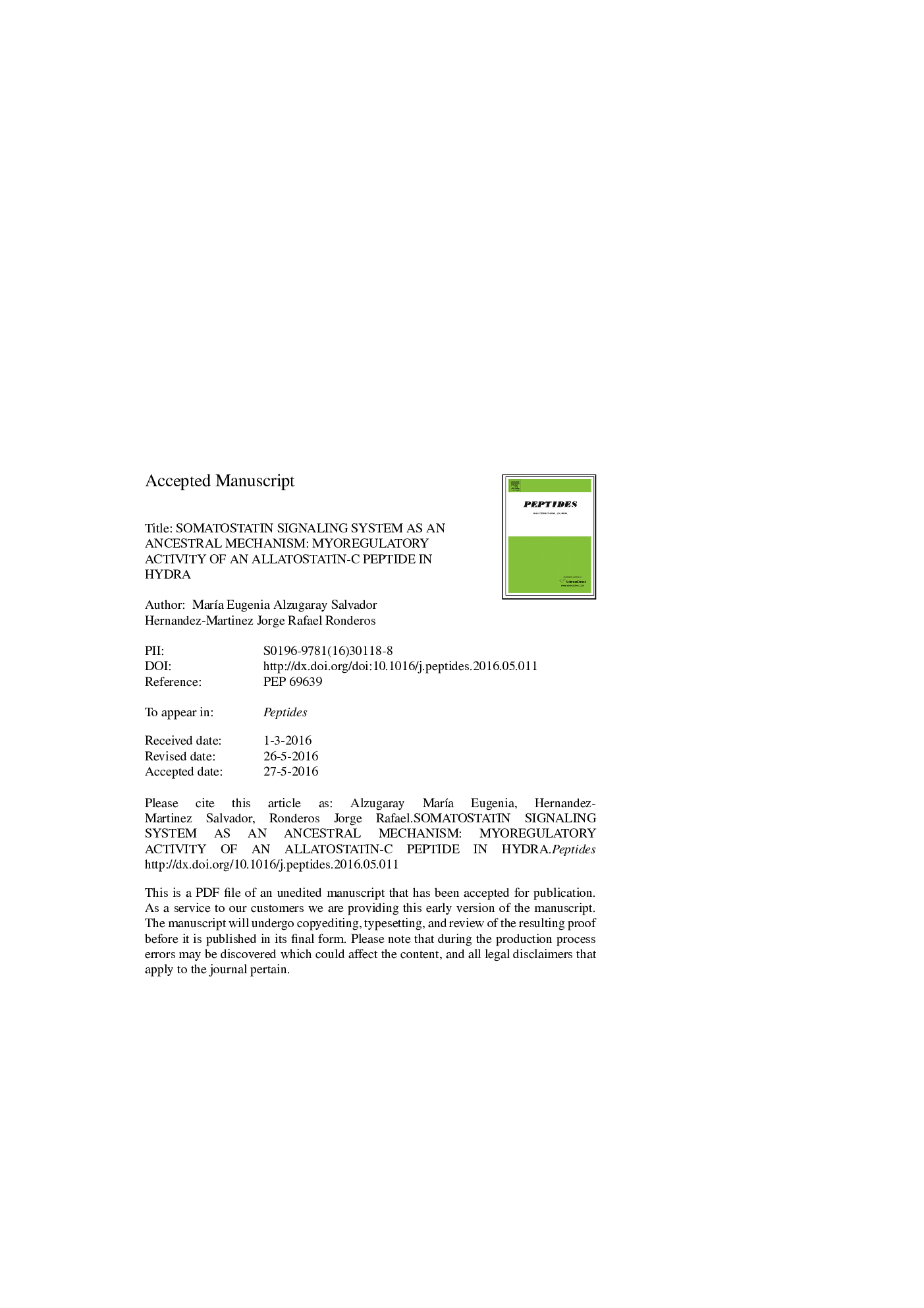| Article ID | Journal | Published Year | Pages | File Type |
|---|---|---|---|---|
| 2005776 | Peptides | 2016 | 35 Pages |
Abstract
The coordination of physiological processes requires precise communication between cells. Cellular interactions allow cells to be functionally related, facilitating the maintaining of homeostasis. Neuropeptides functioning as intercellular signals are widely distributed in Metazoa. It is assumed that neuropeptides were the first intercellular transmitters, appearing early during the evolution. In Cnidarians, neuropeptides are mainly involved in neurotransmission, acting directly or indirectly on epithelial muscle cells, and thereby controlling coordinated movements. Allatostatins are a group of chemically unrelated neuropeptides that were originally characterized based on their ability to inhibit juvenil hormone synthesis in insects. Allatostatin-C has pleiotropic functions, acting as myoregulator in several insects. In these studies, we analyzed the myoregulatory effect of Aedes aegypti Allatostatin-C in Hydra sp., a member of the phylum Cnidaria. Allatostatin-C peptide conjugated with Qdots revealed specifically distributed cell populations that respond to the peptide in different regions of hydroids. In vivo physiological assays using Allatostatin-C showed that the peptide induced changes in shape and length in tentacles, peduncle and gastrovascular cavity. The observed changes were dose and time dependent suggesting the physiological nature of the response. Furthermore, at highest doses, Allatostatin-C induced peristaltic movements of the gastrovascular cavity resembling those that occur during feeding. In silico search of putative Allatostatin-C receptors in Cnidaria showed that genomes predict the existence of proteins of the somatostatin/Allatostatin-C receptors family. Altogether, these results suggest that Allatostatin-C has myoregulatory activity in Hydra sp, playing a role in the control of coordinated movements during feeding, indicating that Allatostatin-C/Somatostatin based signaling might be an ancestral mechanism.
Related Topics
Life Sciences
Biochemistry, Genetics and Molecular Biology
Biochemistry
Authors
MarÃa Eugenia Alzugaray, Salvador Hernández-MartÃnez, Jorge Rafael Ronderos,
